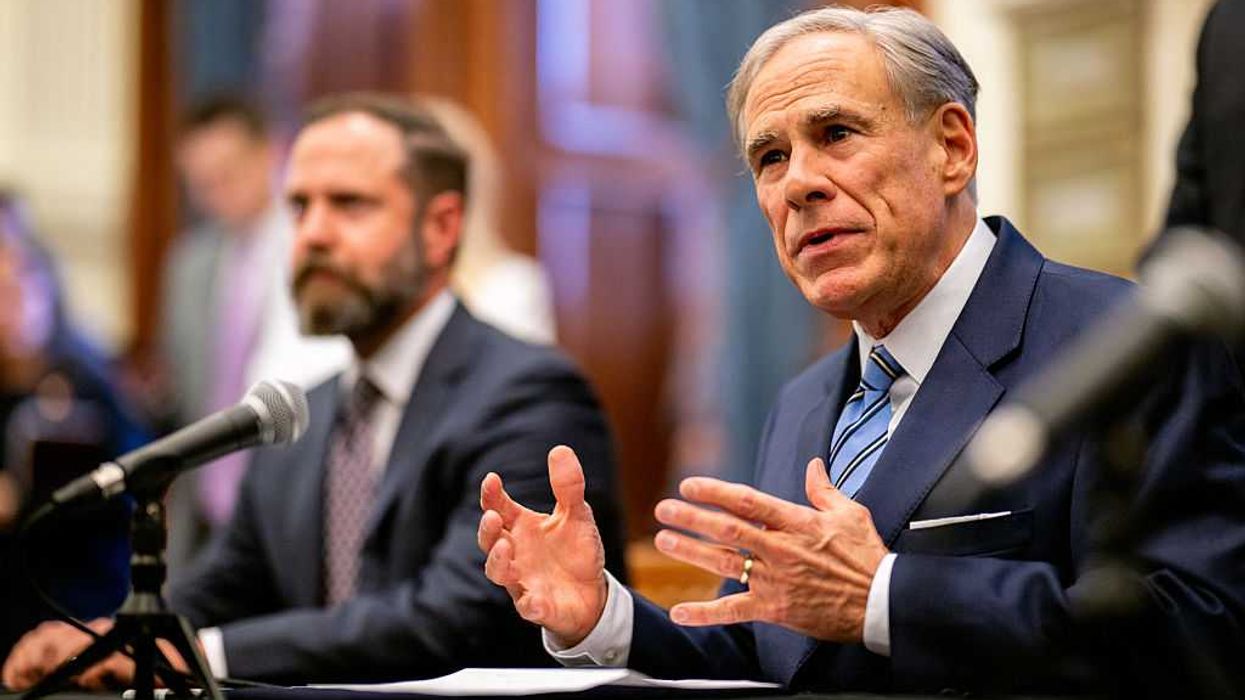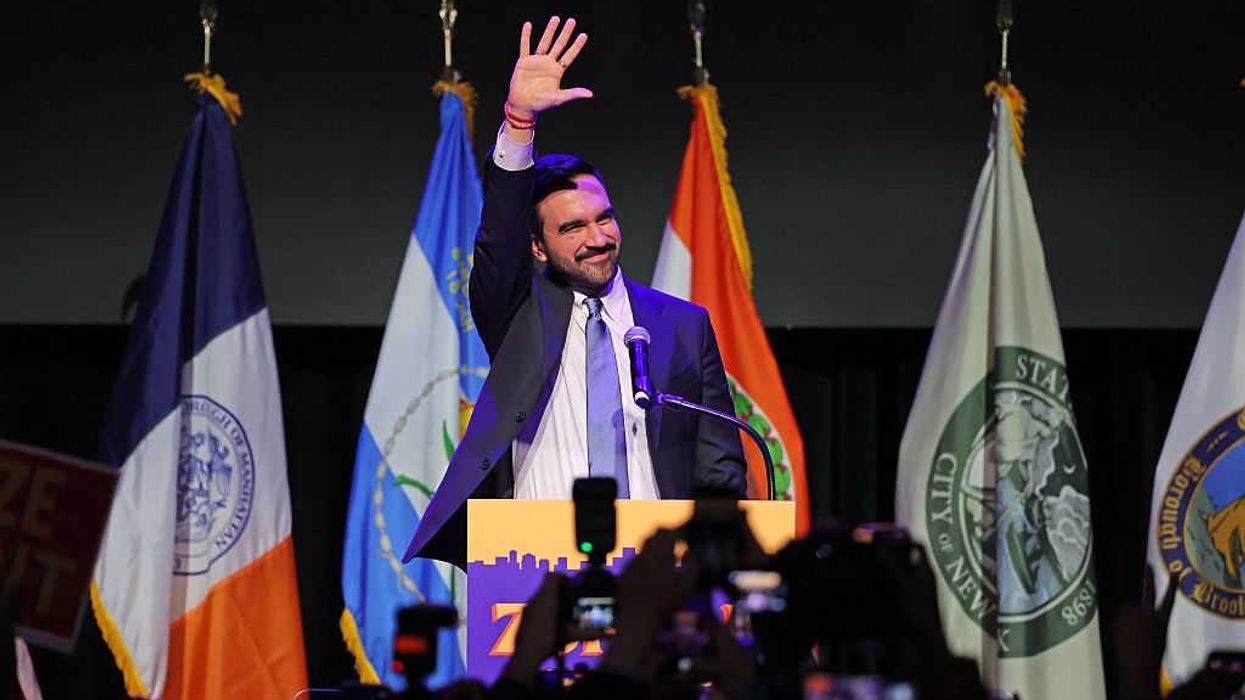During today's radio broadcast, Glenn shared a disturbing story: the Satanic Temple is filing lawsuits in GOP-led states with abortion bans fighting to preserve their "Satanic abortion ritual" as a religious right. And what's more—the mainstream media is heralding them as a force against the "religious right."
The British publication The Guardian wrote a non-editorial piece on the Satanic Temple's fight against the conservative religious establishment. The article, written by Adam Gabbatt, featured an interview with Satanic Temple co-founder and spokesperson Lucien Greaves. Gabbatt praised the Satanic Temple's fight for "fundamental issues," such as removing "prayer in classrooms, religious holiday displays and the distribution of Bibles in schools," and now, abortion.

Gabbatt unabashedly depicted Greaves as an emblem of rationalism, freedom of speech, and freedom of choice. He highlighted the Satanic Temple's doctrine that Satan is a "symbol of rebellion and opposition to authoritarianism. According to the Satanic Temple’s website, “To embrace the name Satan is to embrace rational inquiry removed from supernaturalism and archaic tradition-based superstitions.” Greaves himself tweeted that this very interview with The Guardian discussed his "fight for democracy in an era of encroaching theocracy." Have you heard a more perfect synopsis of the anti-religious left?
I spoke with The Guardian about the fight for democracy in an era of encroaching theocracy... https://t.co/3XMYIyCX0T
— Lucien Greaves (@LucienGreaves) January 4, 2023
The Guardian''s left-leaning slant is anything but subtle. However, Gabbatt's bias in particular against Christian conservatives just oozes off of the article. He describes Greaves as a "fitting frontman for a group that is regularly demonized by its Christian opponents"—pun intended?—and says "he could be in one of the heavy metal bands that terrified neurotic parents in the 1980s and 90s." According to Gabbatt, Greaves is an innocuous punk-rocker who is standing up to the "draconian" "religious right." This couldn't be further from the truth.
Reader discretion is advised. The following describes the details of the Satanic abortion ritual.
Let's get back to the original point at hand—what is the Satanic abortion ritual that Greaves is fighting for? It is disturbingly reminiscent of the platitudes we hear from the anti-religious left.
The Satanic Temple has seven fundamental tenants, and Greaves argues that the Satanic abortion ritual is an essential expression of the third and fifth tenants of the Temple and should therefore be protected by the First Amendment. As Greaves says:
States are passing laws premised on this idea that foetal tissue has personhood, or is a unique and distinct human life. We don’t agree with that position. We believe it’s a religious position, and we don’t believe states have any right to put any impositions on us.
The Satanic Temple's pamphlet on the "abortion ritual" describes the procedure as the following:
The Satanic Abortion Ritual is a destruction ritual that serves as a protective rite. Its purpose is to cast off notions of guilt, shame, and mental discomfort that a patient may be experiencing due to choosing to have a legal and medicallysafe abortion.
The Temple further affirms abortion as "consistent with the ideals of liberty and freedom. Be proud of pursuing what you want for your life despite opposition."
The Satanic abortion ritual
To begin the ritual, the woman looks at herself in a mirror right before the abortion procedure, reminding herself of her "personhood and [her] responsibility to [her]rself." She then recites the third tenant of the Satanic Temple, which states: "One’s body is inviolable, subject to one’s own will alone."
When she is ready for the abortion procedure, the woman recites the fifth tenant, which says, "Beliefs should conform to one's best scientific understanding of the world. One should take care never to distort scientific facts to fit one's beliefs."
Once the abortion is complete, the woman recites the "personal affirmation," which is, "By my body, my blood. By my will, it is done." The Temple says the abortion ritual helps one "feel doubts dissipating and your confidence growing as you have just undertaken a decision that affirms your autonomy and free will."
This is evil...
There is more to be said about the issues with Greave's religious liberty argument over the Satanic abortion ritual, but the root of the matter is simple: this is the battle between good and evil, and it is important we call it as such. Glenn continues to point out how the destructive denigration of the human person has its roots in the fact that we've disregarded the true God and replaced Him with ourselves. Notice how the Satanic language uses language like "my blood," "my choice," "my body," "my will." These things derive their significance from God alone because personhood comes from the inherent dignity that He bestowed upon us. However, when we do away with God, these things become idols unto themselves, and the sanctity of personhood is sacrificed on the altar of the individual will.

 Anadolu / Contributor | Getty Images
Anadolu / Contributor | Getty Images
 Brandon Bell / Staff | Getty Images
Brandon Bell / Staff | Getty Images Europa Press News / Contributor | Getty Images
Europa Press News / Contributor | Getty Images ANGELA WEISS / Contributor | Getty Images
ANGELA WEISS / Contributor | Getty Images